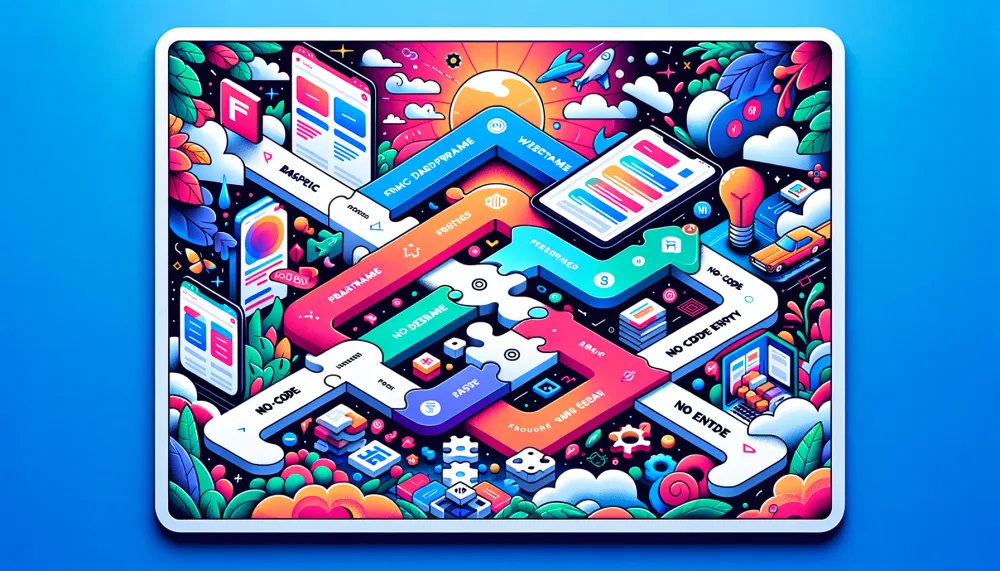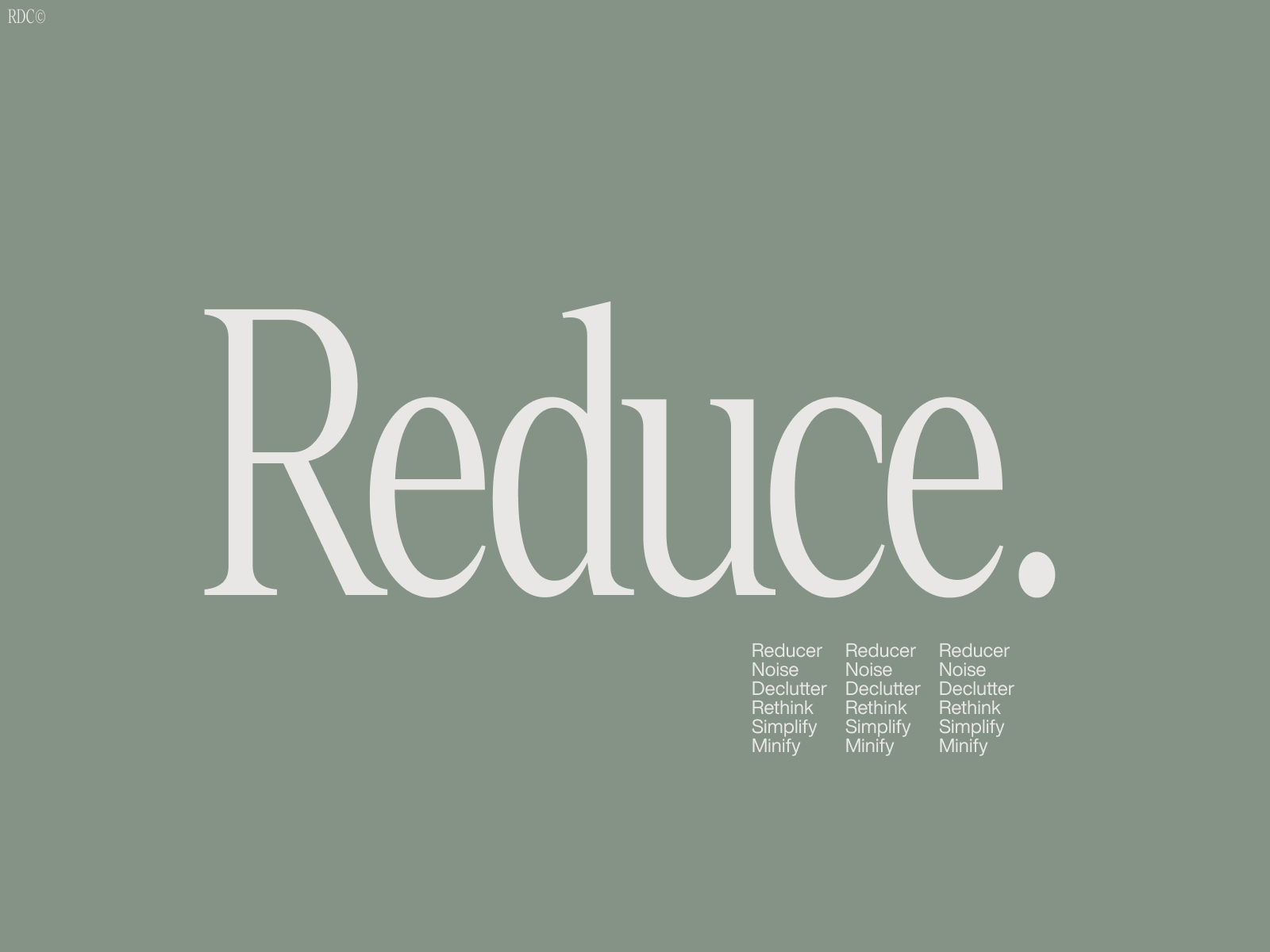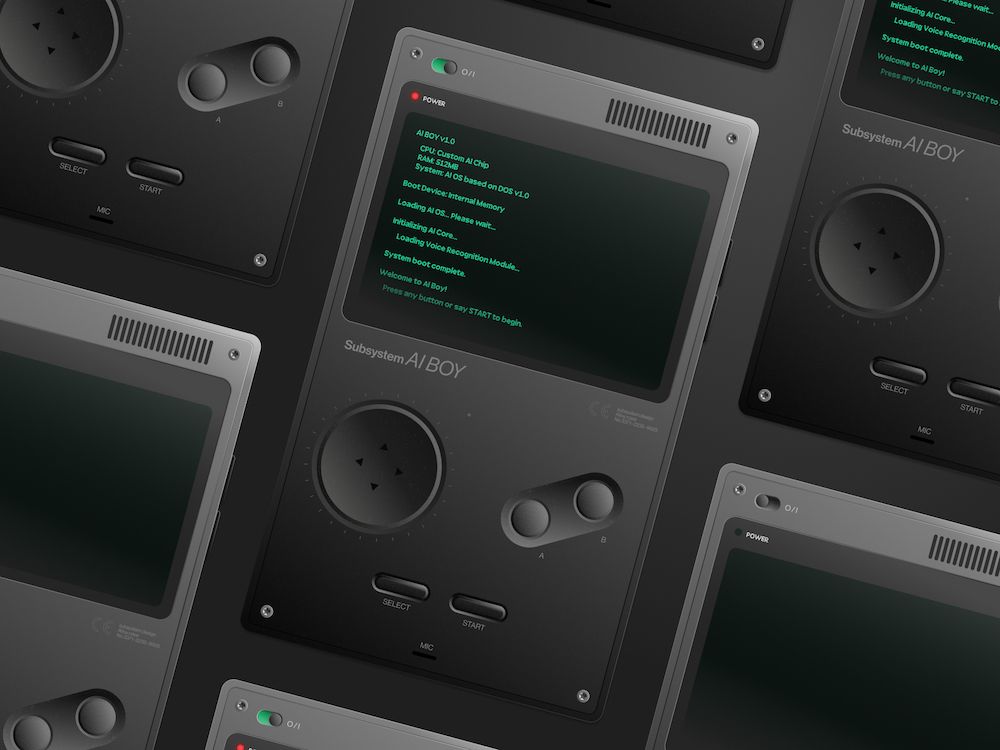The Unlimited Design Revolution
The design industry is undergoing a seismic shift with the introduction of unlimited design subscriptions. Agencies like our Subsystem are investing in this model, offering unlimited, high-quality User interface design with quick turnarounds and unlimited revisions. But why would an already successful agency venture into this territory? And what does it mean for your startup?
What to Expect?
In a nutshell, this guide dives deep into the unlimited design subscription model, dissecting its pros and cons from both the agency and startup perspectives. We'll look at why agencies like Subsystem are adopting this model and how it's revolutionizing the way startups approach their design needs.
Overview of Design as a Subscription - The unlimited design subscription model is a new paradigm in the design industry, offering a buffet of design services for a fixed monthly fee. Gone are the days of project-based pricing or hourly rates. This model promises predictability, flexibility, and a continuous relationship between the agency and the client. It's like having an in-house design team, but without the overheads and hiring headaches.
Who This Article is For - This guide is a must-read for startups, especially those in the early stages of their journey. If you're a startup founder grappling with design challenges, from branding to UI/UX, and you're not ready to hire a full-time design team yet, this article is for you. We'll help you understand how an unlimited design subscription can be a game-changer, offering you high-quality design services that are both affordable and scalable.
Why offer Unlimited Design in the first place?
Clients often want more design work after completing large projects. Offering unlimited design allows agencies to serve new clients without requiring them to commit to a large project upfront. Let's see how the "Old Way" compares to the "New way" to understand the crucial differences between the two.
The Old Way: Standard Retainers - In a standard retainer model, clients pay agencies a fixed amount to reserve their time and services for a set period. While this provides some level of predictability, it often lacks flexibility. Clients are generally billed for additional work outside the scope of the retainer, and there's usually a cap on the number of design hours or revisions included. This can lead to budget overruns and scope creep, especially for startups that have fluctuating design needs.
The New Paradigm: Subscription Model - The subscription model takes flexibility to the next level. For a fixed monthly fee, clients get access to unlimited design services, including revisions. This means you can request new designs or make changes anytime without worrying about additional costs or going over budget. The subscription model is particularly beneficial for startups, as it allows them to adapt to changing needs without the hassle of renegotiating contracts.
By contrasting these two models, it should become clear that the subscription model offers a more flexible and cost-effective solution for startups, meeting their demands in a way that traditional retainers often can't.
Becoming Essential Partners
It's no longer just about transactional exchanges; it's about building partnerships grounded in mutual growth and understanding. Let's dig deeper into this transformation, examining the shift from transactional relationships to essential partnerships that foster long-term success.
The Transactional Relationship - In the past, agencies were often perceived merely as vendors who delivered a project and then moved on. The relationship was transactional, lacking any depth or long-term engagement. This approach, while straightforward, often missed out on the potential benefits that arise from a deeper, more invested relationship.
The Power of Long-Term Engagement - Contrary to what some might believe, both designers and businesses flourish when there's a genuine investment in fostering a long-term relationship. Here's why:
- Mutual Growth and Understanding: Over time, designers become deeply familiar with a client's brand, ethos, and objectives. This intimate understanding allows them to produce designs that resonate more effectively with the client's target audience and align with their brand vision.
- Value Addition: A prolonged relationship isn't just about familiarity; it's about adding value. When designers are closely aligned with a business's journey, they can offer insights and design solutions that might not be evident in a short-term engagement. They can anticipate needs, suggest improvements, and contribute in ways that transcend the traditional boundaries of design.
- Trust and Efficiency: With time, trust builds. Clients can rely on their design partners to understand their feedback, predict their preferences, and deliver results that hit the mark. This trust eliminates the need for constant back-and-forths, making the design process smoother and more efficient.
In essence, moving away from a purely transactional relationship to one of partnership and mutual growth benefits both parties. For agencies, it means a deeper connection with their clients and the satisfaction of seeing their designs play a pivotal role in a business's success. For startups and businesses, it means having a design partner who truly understands their vision and can bring it to life effectively.
The Partnership Model wins
Unlimited design changes this dynamic. Agencies become an integral part of a startup's journey, contributing not just to design but also to the overall business strategy. This long-term relationship benefits both parties, creating a partnership that goes beyond mere transactions.
The Project-Based Uncertainty - Agencies relying solely on project-based work often face revenue uncertainty, making it challenging to plan for growth or even sustain operations.
The Subscription Stability - The subscription model offers a steady, predictable income, allowing agencies to focus on quality and innovation rather than scrambling to secure the next project. This stability is crucial for long-term planning and growth.
The Cost of In-House Teams - Startups need a lot of design work but hiring an in-house team can be prohibitively expensive, especially in the early stages.
The Subscription Solution - An unlimited design subscription offers startups access to a range of specialized design services at a fraction of the cost of hiring an in-house team. This not only saves money but also provides startups with high-quality, specialized design work tailored to their needs.
Cost-Effectiveness - Whether bootstrapped or well-funded, startups are always looking to maximize the value they get from every dollar spent. Being mindful of budgets is crucial to ensure sustainable growth and effective resource allocation. The subscription model caters to this need by offering predictable monthly costs. This not only provides financial clarity but also allows startups to plan and manage their cash flow more effectively, ensuring they get the best return on their investment.
Additional Considerations:
- Cost and Time Spent on Recruiting for an In-House Team: Building an in-house design team isn't just about salaries; it also involves recruitment costs and the time spent in interviews, onboarding, and training. These costs can quickly add up, making the subscription model an attractive alternative.
- Cost and Time Spent on Negotiating with Agencies: Traditional design agencies often require lengthy negotiations, proposal evaluations, and contract discussions. This process can be time-consuming and may also involve hidden or additional costs. With a subscription model, you get a straightforward pricing structure, saving both time and money.
By addressing these financial and time-related factors, the subscription-based design service becomes an even more compelling option for startups operating on limited resources.
Flexibility and Scalability
One of the biggest advantages of a subscription-based design service is the flexibility it offers. Startups can easily scale their design needs up or down based on project requirements, without the hassle of renegotiating contracts or finding new freelancers. This adaptability is crucial for startups that are in a constant state of flux.
Additional Considerations:
- Outsourcing Design Scaling to a Reliable Partner: When you're juggling multiple aspects of a startup, every bit of mental space counts. Outsourcing your design needs to a reliable subscription service means one less thing to worry about, allowing you to focus on other critical areas of your business.
- Direct Communication Without Unnecessary Meetings: In the fast-paced startup environment, time is of the essence. Subscription services often offer direct lines of communication with designers, eliminating the need for time-consuming meetings. This not only saves time but also keeps everyone involved in the loop and on top of their game.
By addressing these additional factors, the subscription model further solidifies its position as a flexible and scalable solution for startups navigating the unpredictable waters of entrepreneurship.
Consistent Quality
When every decision can be pivotal, maintaining a consistent quality in branding and design is non-negotiable. It is not just about creating a visually appealing brand, but about building a story that resonates with the your startup's journey.
A subscription service stands tall as a solution, offering a dedicated team that immerses itself in understanding the brand's ethos deeply. This ensures a production line of designs that are not just high-quality and cohesive but are also in harmony with the brand's evolving narrative, giving it a solid ground in the competitive market.
This model is especially beneficial for startups keeping a close eye on their budget. It removes the inconsistencies that come with hiring different freelancers for various tasks. With a set monthly fee, startups know exactly what they're spending, and they can trust in the work's consistent quality. This mix of good pricing and reliable quality makes the subscription model a smart choice for startups.
- Busting the Myth of Inconsistency: There's a general misconception that subscription-based design services can't deliver consistent quality. This couldn't be further from the truth. The level of consistency you experience is not a limitation of the subscription model itself but is entirely dependent on the team delivering the service. A reputable subscription service will maintain a high standard of quality across all designers and projects.
It should become clear that a subscription model can indeed offer consistent, high-quality design, provided you choose a service that values these principles. This makes it an even more attractive option for startups looking to build a cohesive brand identity.
Time Savings
The recruitment process can be a time-consuming affair, especially when you're looking for specialized design skills. Subscription services offer immediate access to a pool of vetted professionals, allowing startups to hit the ground running. This saved time can then be invested in other critical areas like product development or marketing.
Access to Diverse Skills
From UX/UI to graphic design, startups get a range of skills under one roof. They often require a gamut of design services, from UX/UI design to marketing collateral. Subscription-based services usually feature multidisciplinary teams, offering a one-stop-shop for all design needs. This eliminates the need to juggle multiple freelancers or agencies, streamlining the design process.
Focus on Core Activities
Outsourcing design work frees up internal resources. With design needs taken care of, startups can channel their energy into product development, customer acquisition, and other core activities that directly contribute to growth.
By addressing these, subscription-based design services offer a compelling value proposition for startups, making it an option worth considering for those looking to optimize their design processes.
The Future of Design is Here, and It's Unlimited
We've taken a comprehensive look at the unlimited design subscription model, dissecting its many facets and addressing common concerns. It's clear that this model is more than just a trend; it's a transformative approach that's reshaping the design industry. Agencies like Subsystem are leading the charge, offering a compelling blend of quality, flexibility, and cost-effectiveness that's hard to ignore.
For startups, especially those in the early stages, this model offers a golden opportunity to access high-quality design services without the burden of hiring an in-house team or navigating the complexities of traditional agency contracts. It's a win-win situation that benefits both agencies and startups, fostering long-term partnerships and driving innovation.
But as with any paradigm shift, the conversation is ongoing. We'd love to hear your thoughts on this. Have you tried an unlimited design subscription service? What was your experience like? Do you have any concerns or questions that we haven't addressed? Your insights could be invaluable to others who are considering this model.
Feel free to share your opinions, experiences, and questions in the comments section below. Let's keep the conversation going and explore the topic together.
Whether you're a startup founder, a design agency, or someone simply interested in the future of design, we hope this article serves as a valuable resource for you.



